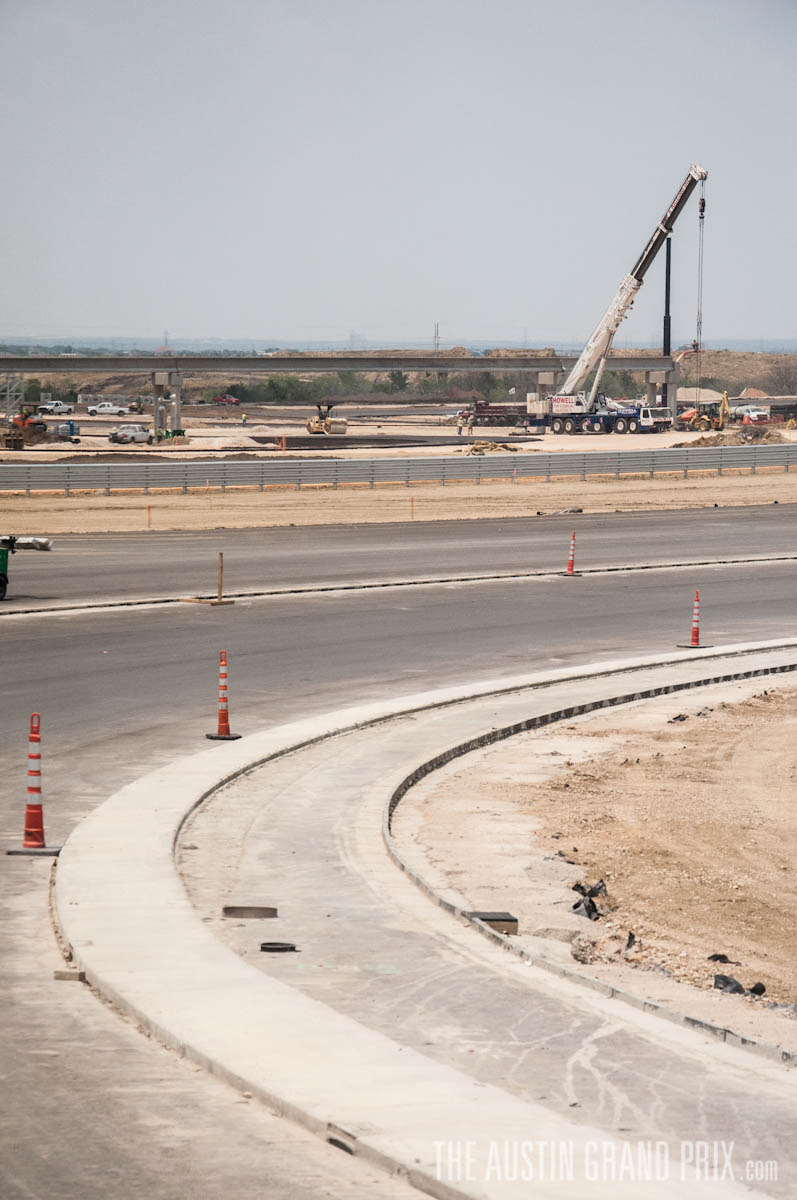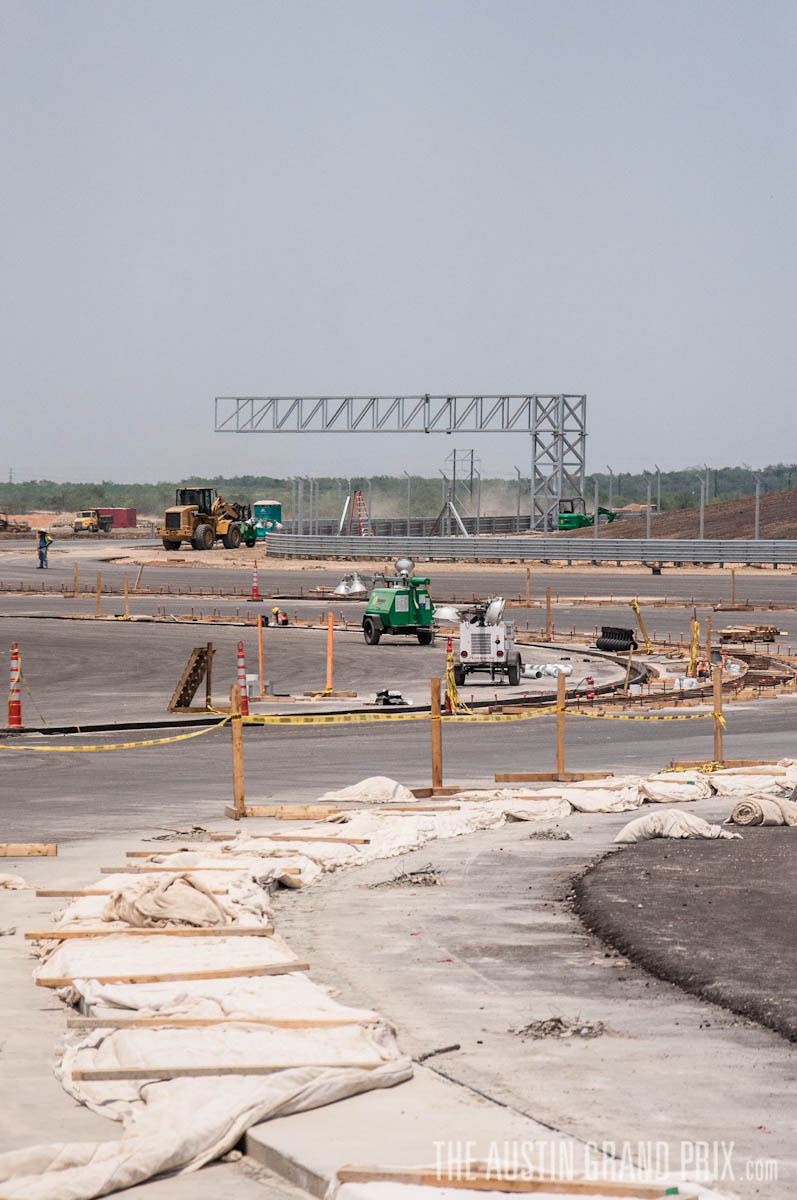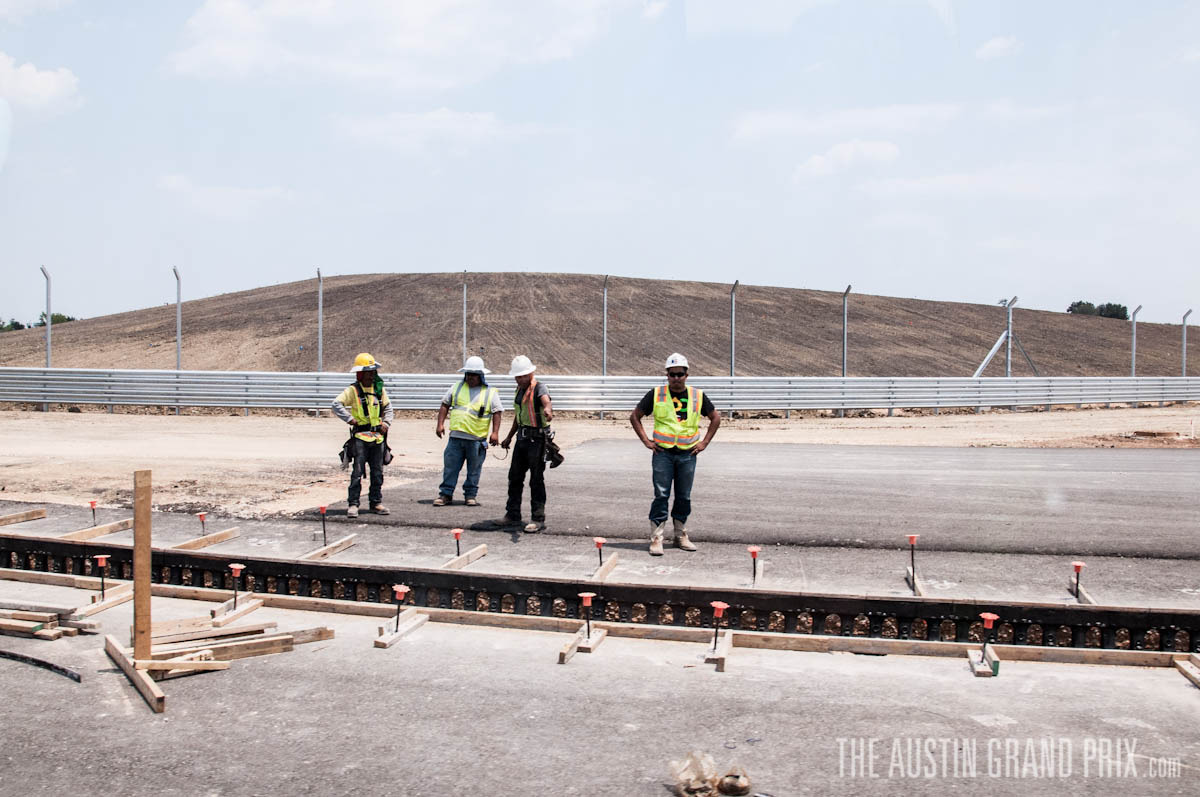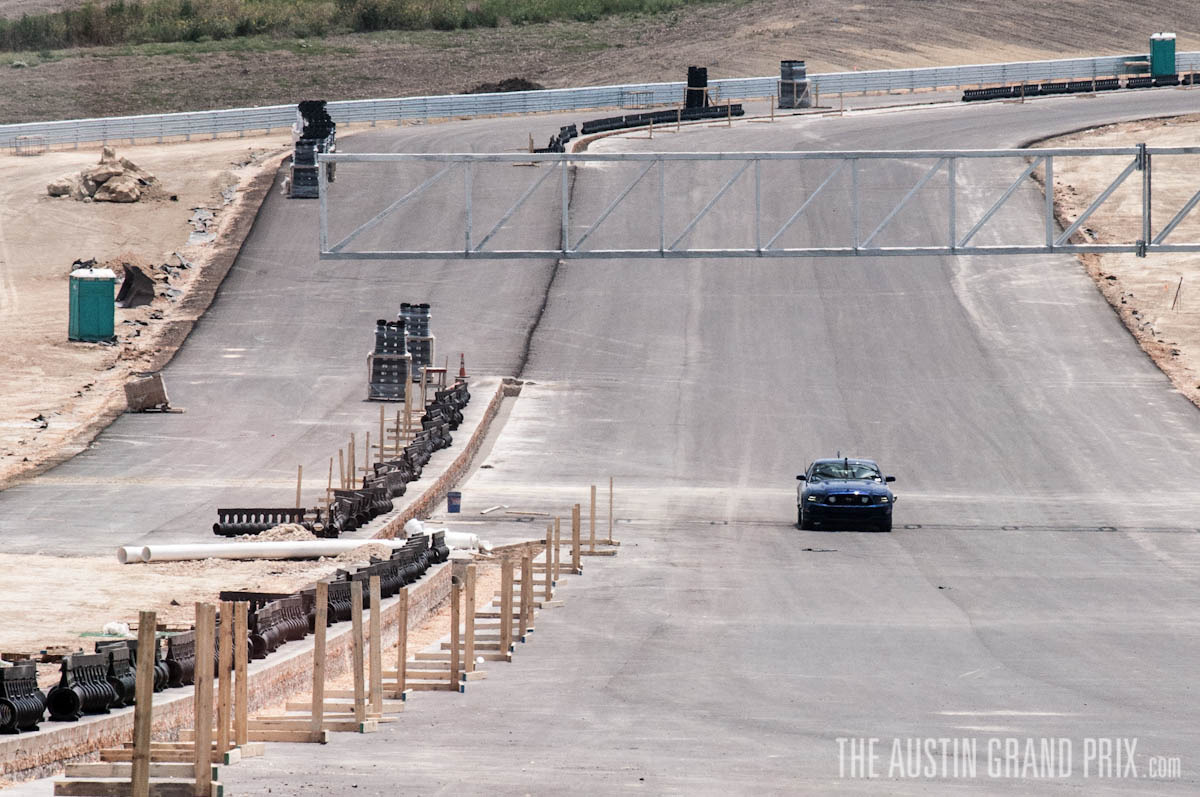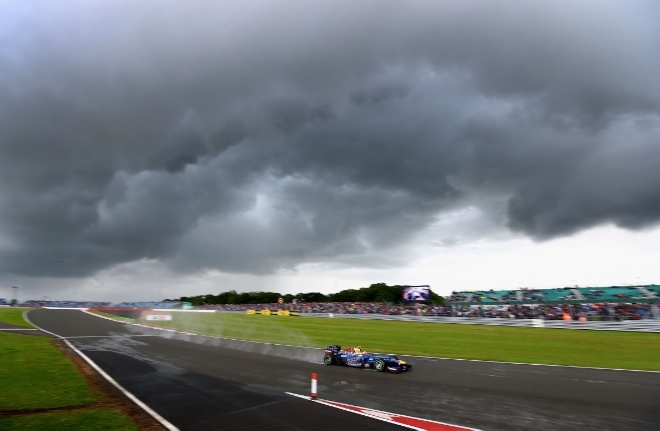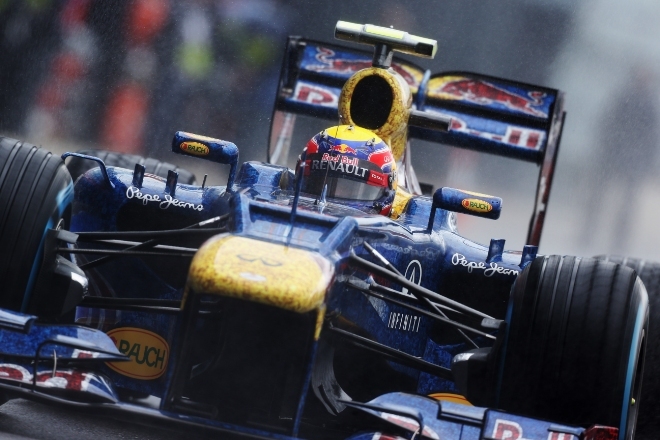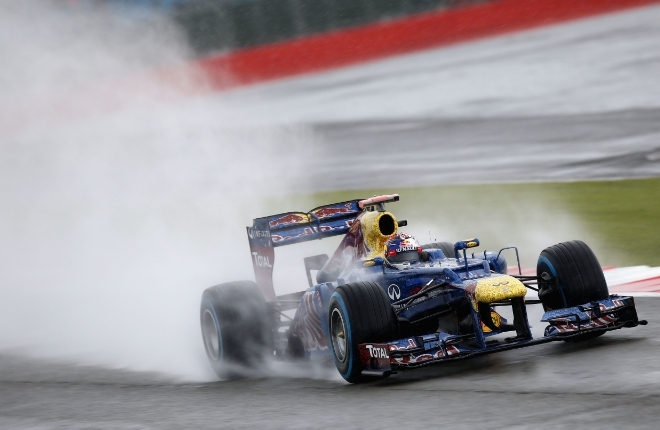We sat down with Williams F1 Team Deputy Team Principal Claire Williams on the morning of the 2013 F1 USGP to discuss her new role with the team, social media in Formula 1, and women in motorsport. (Photo credit: Williams F1 Team)
Viewing entries in
Technology

With the support of Lotus F1, team partner Wallenborn and Jerome D’Ambrosio personal sponsor Soleco have agreed on a deal that will construct a megawatt of solar power at the Wallenborn campus in Luxembourg. The solar array, which is to be installed and managed by Dutch-based Soleco, will be the first of its size in the country and the largest undertaking by Soleco since its inception. This partnership is a prime example of the networking and business opportunities that can be afforded to such companies who are involved in F1. The deal was even struck at the Belgian Grand Prix during the first weekend of September.
According to Wallenborn CEO Franz Wallenborn, the entire array “will be installed on the roofs of [their] high security logistics warehouse.” To put into perspective how much power 1 megawatt really is, Wallenborn’s net electricity usage could actually be negative during months of maximum solar intensity (depending on the size and power demands of the facilities). Or put another way, Wallenborn could potentially “sell” unused electric power back to the utility company during times solar generation exceeds demand - resulting in huge savings in operating costs for the company.
As a power engineer by day, it excites me that industry and private citizens alike are taking action to offset their electric power usage. I believe a diverse mix of green energy solutions – not just solar – is the best overall solution to a future of sustainable energy consumption. Kind of like how KERS (Kinetic Energy Recovery System) onboard today’s F1 cars supplement the gasoline-powered engines by providing an extra 80 HP boost. With Lotus F1’s support of the Wallenborn solar project, perhaps we will see other renewable and sustainable solutions to make F1 engines even more efficient?
Alexander Rossi was in Austin last week for the Austin Fashion Week kick off event, "Shift Into Style." Before he took to the runway Friday night, we sat down with Alexander and got a deeper understanding of his appreciation for the new American home for F1, Circuit of The Americas.
What we really like about this interview is Alexander's in-depth analysis of a 3D model of the Circuit, explained to us through the experienced eyes of a driver.
Alexander also autographed some COME AND RACE IT stickers and shirts - keep your eyes peeled for this great giveaway!
For a more in-depth look into Alexander's role as American racing driver, check out: ALEXANDER ROSSI TO JOIN AUSTIN FASHION EVENT.
// A TEXAS-SIZED THANK YOU TO ALEXANDER ROSSI AND TEAM FOR THIS WONDERFUL OPPORTUNITY TO CONNECT WITH AUSTIN & F1 FANS WORLDWIDE!
 Alexander also autographed some COME AND RACE IT stickers and shirts - keep your eyes peeled for this great giveaway!
Alexander also autographed some COME AND RACE IT stickers and shirts - keep your eyes peeled for this great giveaway!
Sometimes I get very envious of the unique coverage that F1 fans overseas are privy to. I've seen the BBC F1 coverage before and it is uninterrupted, non-stop F1 action for a nice chunk of time on race day. It is fantastic. But alas, I'll save that discussion for another day.
Before yesterday's British GP, SKY Sports F1 (which I've also heard pulls out all the stops for F1 coverage) aired a new McLaren animation series, "Tooned." It's a CGI-animated series, in Pixar fashion, that features Lewis Hamilton and Jenson Button, as well as British actor and comedian Alexander Armstrong.
I'm amused to see Ron Dennis talking so candidly about cartoon characters. Enjoy this behind the scenes look, and the full video also below.
This looks like a great opportunity to reach a whole new demographic: future F1 Fans!
And who can argue with a spot of British humor?
Every now and then, fans expect the rain to interfere with the outcome of the race and create an exciting spectacle at the same time. While we all quietly wish for another repeat of the 1988 Japanese GP each time there is potential for rain at a grand prix, the truth is water is an enormously difficult and dangerous factor to consider for teams and their drivers.
With many close calls on Friday and Saturday during practice and qualifying, the evidence of failed water management at Silverstone is extensive and easy to spot. On the screen, puddles and sheets of water are clearly visible as drivers travel through each obstacle with a distinct wake from their tire treads.
After closer analysis, there seems to be a pattern of behavior throughout the circuit. As I mentioned before, Will Buxton's rant about Silverstone's remodel and the new flooding prone pit lane is evidence that concerns are significant enough to stir up a nationally televised discussion about the situation.
If Silverstone is looking to tackle this problem in order to prevent accidents, race delays, and ensure the comfort and safety of everyone in attendance, then a serious implementation of water management is necessary. Though much of the circuit's remodel was focused on extending the track and the aforementioned new paddock building, it's really no excuse that puddles are forming on such a high-class facility.
With hindsight, it's always easy to give Silverstone a hard time for these issues, so instead we focus on what steps can be done to address them. To do so means looking no further than our facility here in Austin, and how Circuit of The Americas is working to make sure fans, drivers and teams are well insulated from overflows of water.
In our recent trip to the Austin circuit for interviews with Australian V8 Supercar driver Mark "Frosty" Winterbottom, I also spoke with the head of the project from Tilke, Frank Both. In our discussions, I learned more about the plans the Tilke engineering team has set in motion to address the water retition at COTA.
We first discussed the overall progress of COTA and took a look at the surrounding situation at Turn 11. At our feet was the initial layers of asphalt on the track with two white paint lines at a slight change in elevation. Frank explained after the initial layers of asphalt are set down, the surface is cut and forms are laid for the curbs along with drainage pipes.
Lining the circuit and staged ready for placement behind the curbs, a modular drainage system waits to be set into place. I asked Frank about this system and he explained the drainage system lined the whole circuit to ensure proper collection of water at any point along the track. Thus, the necessary infrastructure to prevent puddles and streaks of water across the circuit is not localized, but instead a continuous network around the whole circuit. Should rain become a factor at this year's USGP, fans can be assured that the necessary infrastructure is in place to make sure all the action stays on track and doesn't spill off (as much as one can ensure, anyway!).
After this weekend's British GP, there's plenty of evidence that careful consideration for water retention should not be taken lightly. Failing to do so may end up costing a driver some points or even put him in the wall. After speaking with Frank Both and learning more about Tilke's plans for COTA, I've gained another level of respect for their expertise in circuit construction. We can rest assured the dangers of excessive water on the track will be absent, thanks to the foresight of Tilke and the contractors constructing COTA.
Without a doubt, Formula 1's ability to take on the rain makes it a unique series in the motorsports world. Tolerating substantial downpours and several hour delays is the norm for the traveling event, separating it from the fair-weather nature of most racing (think day-long delays, such as the Daytona 500 this year). This year's British GP will certainly not disappoint, and for those attending the race, it's going to be a tough couple of days "mucking about" in the mud around the circuit and the traffic on the A43 highway.
We've seen that tires can be the deciding factor this season, evidence in Fernando Alonso's fight in the final two corners of the Malaysian GP with Sergio Perez, almost costing him the win. The likelihood of such another fight is eminent as the potential of an "emotional" British GP will only be exacerbated by the buckets of rain pouring on Silverstone this weekend. Today's practice sessions were a combination of control and chaos as each driver struggled to pilot their vehicle across the delicate, slippery surface. Though the action was relatively slow today, tomorrow's qualifying shouldn't disappoint.
Let's not forget as well, the recent remodel of the Silverstone circuit has spurred a love/hate relationship with the F1 community. Though Formula 1 has seen a bit of rain at other circuits so far this year, the new remodel of the Silverstone circuit has made the problems more complicated.
In his rant this morning on Speed TV's live coverage of Practice session, Will Buxton (@willbuxton) let America know exactly how he feels about the remodel. With a Pit Lane that's partially below the water table, the likelihood of flooding in this essential area is a real possibility. Just how they will address the issue as the weekend continues is still a mystery, but we hope fixing floaties to the cars is outside of the regulations.
Rain filled races have made the history books time and time again, and no one would dare say only dry races are the most exciting. It is possible to go too far to the other side of that argument with Bernie signaling he's a fan of playing in the rain. Though the likelihood of sprinklers being added to race tracks for "fun" seem to be squashed for now, we'll be looking forward to a wet mess in Silverstone this weekend and hoping rain stays a natural feature of F1.



